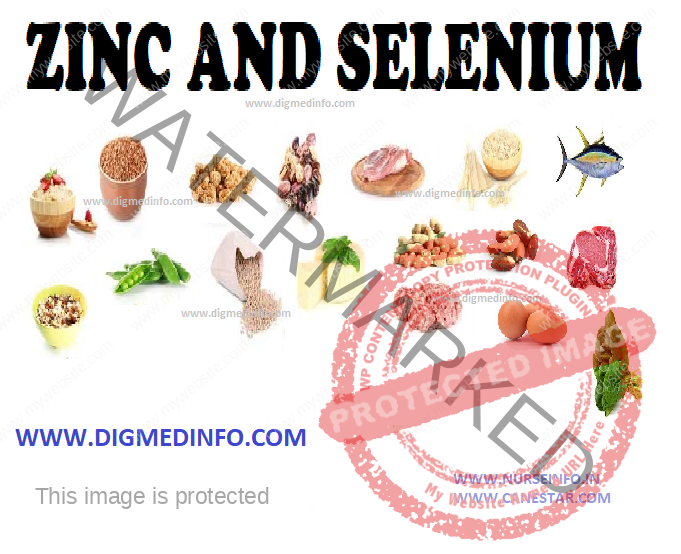ZINC AND SELENIUM – SOURCES, SYNDROME AND SUPPLEMENTS
ZINC
Zinc is present in many enzymes. Highest concentration occurs in the liver, voluntary muscle, bone, prostate, and ocular structures. Foods such as meat, fish, peas and cereals contain zinc. Daily requirement is not clearly known, but is around 15 mg. Dietary deficiency is very rare. Zinc deficiency leads to impairment of maturation and immunodeficiency. In malnourished subjects zinc deficiency may result in thymic atrophy.
A syndrome of dwarfism and hypogonadism seen in Egypt and Iran has been attributed to zinc deficiency. Oral zinc sulphate corrected this clinical picture. Acrodermatitis enteropathica is an inherited disorder resulting from the malabsorption of zinc, probably due to an enzymic defect.
Administration of zinc sulphate 30-150 mg/day results in complete remission. Oral zinc sulphate 100 mg/day has been found to stimulate the growth of granulation tissue in chronic ulcers. Oral supplementation of zinc 10 mg (5mg) in children less than 1 year of age for 16 months reduced overall all-cause mortality by 7%.
SELENIUM
Selenium is a constituent of selanoproteins. It has structural and enzyme roles and it acts as an important antioxidant. It is a catalyst for the production of thyroid hormone. Other functions include: (1) proper functioning of the immune system, (2) sperm motility, (3) maintenance of proper mood and mental state, (4) resistance against cancer. Selenium retards the progress of AIDS. Daily requirement is 400-450 μg/day. Dietary sources include Brazil nuts, kidney, crab, liver, shellfish, fish, meat, poultry, wheat and some vegetables. In animal foods selenium is present as sclenocystine. In vegetable sources it occurs as sclenomethionine.



Helpfull